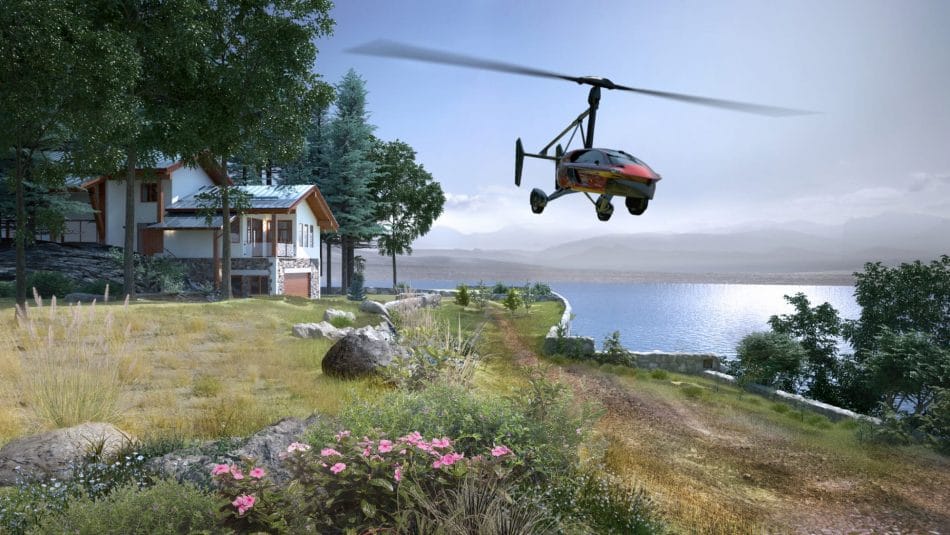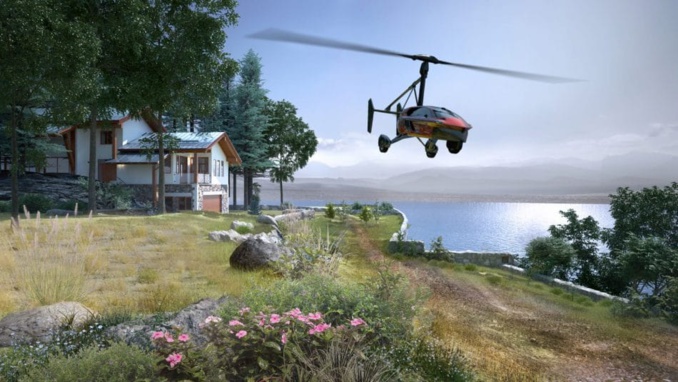The tree-wheeled vehicle with blades not only goes on the roads, but also flies. The process of turning the car into an aircraft takes five to ten minutes, the manufacturer estimated. The mast with a propeller is set automatically, but the driver has to put forward tail and main blades. The take-off site for the car should be not less than 200 x 200 meters. PAL-V Liberty with 200-horsepower engine can score a maximum height of 3500 m. The car's maximum speed mode is 160 km/h, and the vehicle is able to speed up to 180 km/h in flight mode. Maximum range reaches up to 500 km.
Price for the basic model starts from $ 400 thousand. The first series will consist of 90 copies, to be ordered not before 2018. Pioneer models will cost $ 600 thousand dollars, and will be completed by training course, electronic instrument panel, available in flight mode, and other features. To place an order, a customer should make a non-refundable deposit of $ 10 or 25 thousand depending on configuration. PAL-V Liberty is expected to go to sale by the end of 2018.
Story of the uncommon car traces back to 2008, when the Dutch National Aerospace Laboratory and Delft University first presented the flying car’s prototype. However, the vehicle couldn’t fly back then. The prototype had its first successful flight only in 2012. Initially, the company was funded by a group of private investors, and then received a loan from the Dutch Ministry of Economic Affairs. Now the project is supported by three ministries.
The next two years will show whether serial production of a flying car can trigger a real transport revolution. Many futurists expect that this event will be reminiscent of a technology leap occurred in the beginning of the XX century, when people changed from horses to cars. According to the company’s marketers, the new technology may be primarily interesting to the police, armed forces and paramedics.
The Dutch flying cars, despite its high cost and the obvious focus on a narrower audience, exactly fit into the overall vision of transport of the future, of which we have recently been told and which are already trying to stake out Uber’s spot.
source: techcrunch.com
Price for the basic model starts from $ 400 thousand. The first series will consist of 90 copies, to be ordered not before 2018. Pioneer models will cost $ 600 thousand dollars, and will be completed by training course, electronic instrument panel, available in flight mode, and other features. To place an order, a customer should make a non-refundable deposit of $ 10 or 25 thousand depending on configuration. PAL-V Liberty is expected to go to sale by the end of 2018.
Story of the uncommon car traces back to 2008, when the Dutch National Aerospace Laboratory and Delft University first presented the flying car’s prototype. However, the vehicle couldn’t fly back then. The prototype had its first successful flight only in 2012. Initially, the company was funded by a group of private investors, and then received a loan from the Dutch Ministry of Economic Affairs. Now the project is supported by three ministries.
The next two years will show whether serial production of a flying car can trigger a real transport revolution. Many futurists expect that this event will be reminiscent of a technology leap occurred in the beginning of the XX century, when people changed from horses to cars. According to the company’s marketers, the new technology may be primarily interesting to the police, armed forces and paramedics.
The Dutch flying cars, despite its high cost and the obvious focus on a narrower audience, exactly fit into the overall vision of transport of the future, of which we have recently been told and which are already trying to stake out Uber’s spot.
source: techcrunch.com



















